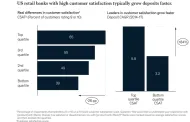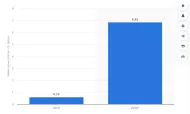Top 6 Accounting Processes to Automate With RPA in 2024
Accounting is manual and rules based, making it a great candidate for automation.
According to Institute of Management Accountants’ (IMA) survey, ±2/3 of the achycountants surveyed rely on spreadsheets, increasing both time spent on financial statements as well as the risk of inaccurate results. The data also confirms that it takes on average 7 days to complete the closing process that shift data from temporary accounts to permanent ones.
Accountants can either adopt domain specific accounting automation solutions or adopt RPA to build automations for their work. Automation will free accountants from mundane tasks, such as account payable and receivable, account reconciliations, and journal entry. Instead, accountants can focus on strategic decision-making and business planning.
In this article we are discussing the most important automatable processes in accounting:
What are the main processes in accounting?

The accounting cycle comprises from the following steps:
- Processing account payable (AP) and account receivable (AR).
- Account payable: a process that covers receiving, processing, and paying out the money that a company owes for goods or services.
- Account receivable is the opposite of account payable. It is the process of recording, accounting, and collecting payments that are owed to the company.
- Journal entry, which includes:
- Journal entry creation: the processes of recording business transactions, including dates, debts and credits, transaction description, and reference numbers.
- Journal posting: Journal entries are then posted to the record-keeping system called general ledger (GL) to sort, store, and summarize the transactions. General ledger forms the basis of a company’s financial statement and income statement.
- Account reconciliation, the process of comparing the company’s financial records against external records to find information about the money spent and received, and balance the final figures.
- Financial close, a process to verify and adjust account balances at the end of specific periods to produce financial reports. These reports inform stakeholders of the company’s financial performance over the period.
Which accounting processes can be automated?
Since most of the accounting processes are repetitive, time-consuming, and require high precision, RPA bots come in handy to reduce costs and increase accuracy in performance.
RPA bots can handle the following processes in accounting:
1. Reporting
RPA can be used to automate the generation of different kinds of financial reports, such as:
- Periodic financial statements, such as balance sheets and income statements
- Compliance reports,
- Profit and loss (P&L) reports,
- Expense reports,
- And tax reports.
To learn more, read our article on RPA reporting.
2. Journal Entry Automation
Vendors claim that more than 50% of the financial close tasks are journal-related. Automating the process would have the following benefits:
- Using OCR to extract accounts payable (AP) and accounts receivable (AR) data in various formats from Excel sheets or other ERP systems.
- Enriching input data from AP and AR processes.
- For example, in cases of invoices with no purchase orders, companies need to trace back the orders’ origins. But if such entries are automated, the digital footprint would make it easy to where each order’s invoice is.
- Supplementing the journal entries with comments, supporting documents, and reconciliations in real-time.
- Loading the journal’s data automatically onto ERP systems.
The main benefit of automating journal entries is time saving. That is because once the close period arrives, as the journal entries have already been filled through out the month, they are ready for posting to the general ledger. Businesses, thus, could expect a faster close.
Click here to learn more about journal entry automation.
3. Account Reconciliation
Account reconciliation procedures may have different steps in different businesses. There are:
- Bank Reconciliation to check the validity of issued checks, and ensure that all transactions have been recorded.
- Vendor Reconciliation to compare customer invoices to vendor accounts. When companies make numerous transactions with clients, it is possible for the buyer and seller to have different records about the balance due to issues in bank payments, manual errors etc. This process allows both parties to identify and reconcile differences and have the same view about the outstanding balance.
- Intercompany (IC) Reconciliation is similar to vendor reconciliation but takes place when different legal entities of the same company (e.g. its subsidiaries) are trading with one another. It is to identify any unrecorded transactions or balances in the books, mistakes in invoicing, loans, deposits, and interests.
Account reconciliation is a process that relies heavily on balance sheets, invoice pdfs, and accounting records. RPA bots can ease the process of account reconciliation because they can easily acquire data, match payment details to company data, and provide real-time visibility into reconciliation performance.
4. Financial Close
Financial close is a process that depends on all the previous processes mentioned above, to produce a report outlining the financial status of the company.
Challenges that face accountants in financial close which are automatable are:
- Data preparation which includes
- manual data entry
- data manipulation tasks due to different business departments sharing data in different formats
- Errors, missing receipts, invoices, or journal entry documents
- No access to real-time data about finance flow
RPA bots help businesses complete the financial close cycle quickly and accurately, by:
- Importing spreadsheets from multiple resources or accounting software to have access to all accounting data.
- Running automated checklists related to closing accounting books to automatically identify and highlight issues.
- Tracking progress, timelines, and approvals in the close process to identify bottlenecks.
- Tracking progress, timelines, and approvals in the financial close process to identify potential issues.
- Comparing financial data using reconciliation depositories or reconciliation management tool.
Businesses can also leverage financial close software to automate financial close processes. See our article on financial close automation checklist for an in-depth explanation.
5. Account Payable (AP)
Account payable is a highly automatable process because it relies on repetitive tasks such as data extraction, invoice validation, and payment processing. Implementing RPA in AP will allow cycle time reduction, cost reduction, and preventing manual errors.
Feel free to read more about RPA use in account payable, steps, benefits, and technologies used, in our article AP automation.
6. Account Receivable (AR)
Account receivable is similar to account payable in the matter of automation.
AR tasks include:
- Extracting data from supplier invoices and customer orders
- Matching invoices to orders, and order to offers.
- Routing invoices for approvals
- Filling and retrieving invoices
- Processing payments
Implementing RPA in account receivable helps companies optimize customer invoicing and payments, as well as deliver reports and analytics on the status of AR processes.
Read in detail about account receivable automation in our article order management for businesses.
How should companies automate accounting?
There are 4 main approaches to automating accounting that we see in enterprises:
- End to end solutions: ERP software provides accounting functionality and ERP providers try to offer automation through improvement of their solution and automation
- Best-of breed solutions that provide out of the box automation: The similarities between different companies’ accounting processes are more than the differences. New vendors are relying on machine learning to automate accounting end-to-end
- Customizable automation solutions: RPA software is one of the most flexible automation tools. They can help automate company specific processes however companies need to be aware that they need to keep some RPA know-how in house for cost-effective bot maintenance.
- An end-to-end solution that is integrated with automation solutions: Enterprises are risk averse in their core processes and throughly test new solutions before deploying them. However, they can try best-of-breed solutions or customizable automation solutions to make their existing system smarter.
If you feel like your business could benefit from an account payable software, we provide data-driven, sortable lists of vendors.
Impact of implementing RPA in accounting
According to a research article about automating accounting processes, implementing RPA in accounting will help companies:
- Avoid financial fraud
- Improve accounting information quality
- Promote auditing efficiency
RPA implementation will also allow companies to
- run leaner accounting organizations
- help accountants focus on strategic initiatives that can help grow the business
For more on RPA
For more on RPA in finance, read our article Top RPA Use Cases / Applications in Finance
To learn more about RPA, you can read:
- Benefits you can reap from RPA
- Our guide on RPA innovations that you can work with today such as no code RPA
If you are interested in applying RPA in other businesses, feel free to read our article Top 100+ RPA Use cases / Applications/ Examples
If you need more help in using RPA to transform your business, you can download our comprehensive whitepaper on the topic:
If you are ready to try using RPA in your business, you can use our prioritized, comprehensive list of RPA vendors to choose the right RPA vendor for your business.
And we can guide you throughout the process of choosing the best tool that fits your business needs:
This article was drafted by former AIMultiple industry analyst Alamira Jouman Hajjar.

Cem has been the principal analyst at AIMultiple since 2017. AIMultiple informs hundreds of thousands of businesses (as per similarWeb) including 60% of Fortune 500 every month.
Cem's work has been cited by leading global publications including Business Insider, Forbes, Washington Post, global firms like Deloitte, HPE, NGOs like World Economic Forum and supranational organizations like European Commission. You can see more reputable companies and media that referenced AIMultiple.
Throughout his career, Cem served as a tech consultant, tech buyer and tech entrepreneur. He advised businesses on their enterprise software, automation, cloud, AI / ML and other technology related decisions at McKinsey & Company and Altman Solon for more than a decade. He also published a McKinsey report on digitalization.
He led technology strategy and procurement of a telco while reporting to the CEO. He has also led commercial growth of deep tech company Hypatos that reached a 7 digit annual recurring revenue and a 9 digit valuation from 0 within 2 years. Cem's work in Hypatos was covered by leading technology publications like TechCrunch and Business Insider.
Cem regularly speaks at international technology conferences. He graduated from Bogazici University as a computer engineer and holds an MBA from Columbia Business School.
To stay up-to-date on B2B tech & accelerate your enterprise:
Follow on

Comments
Your email address will not be published. All fields are required.